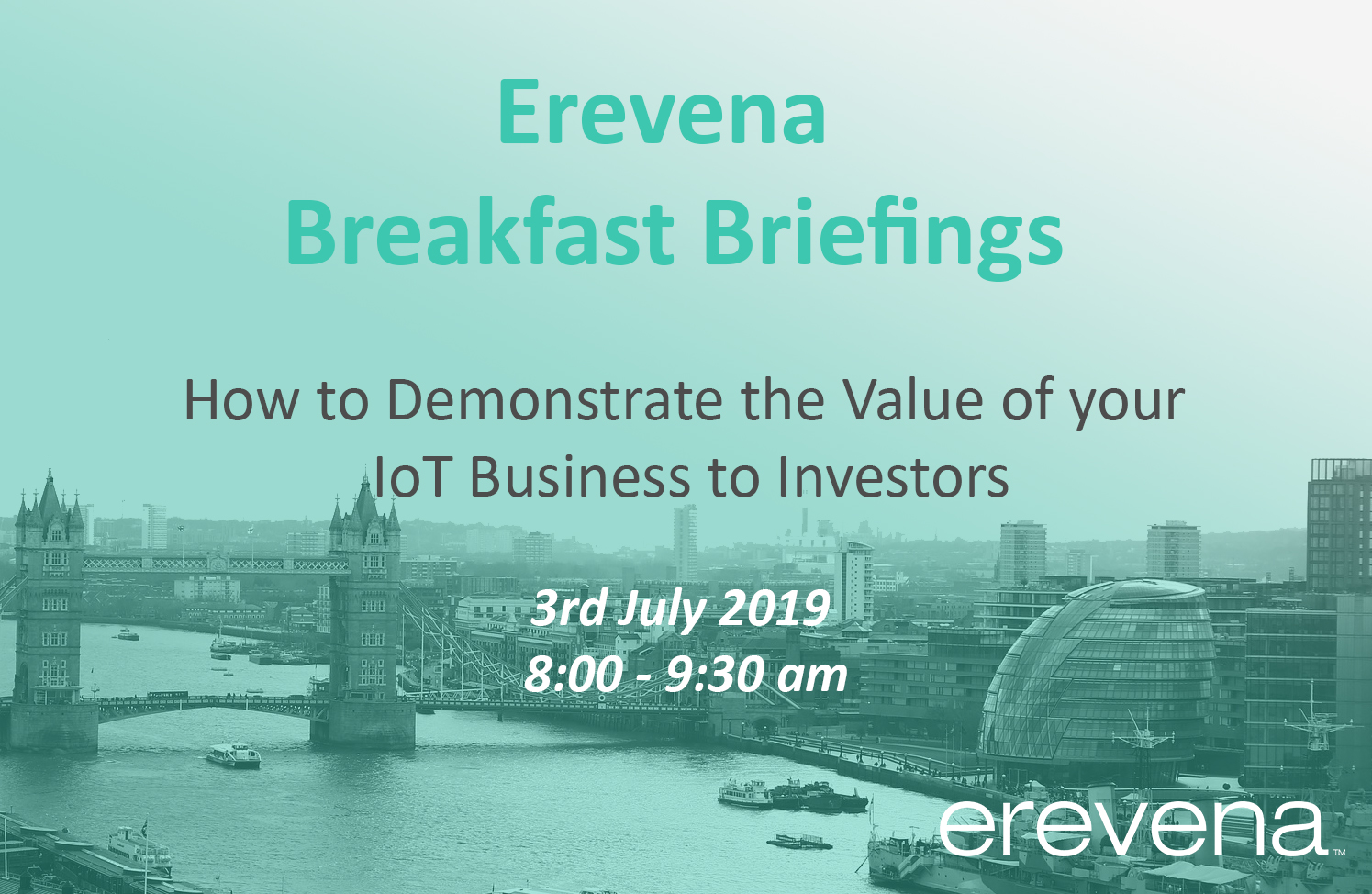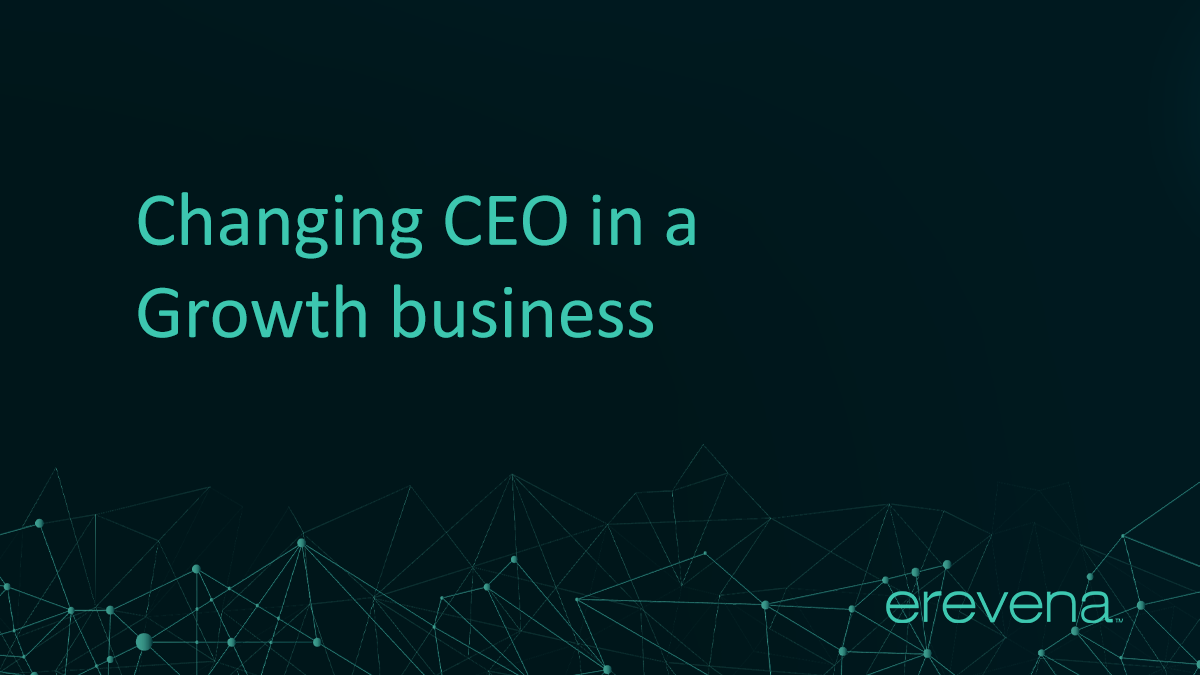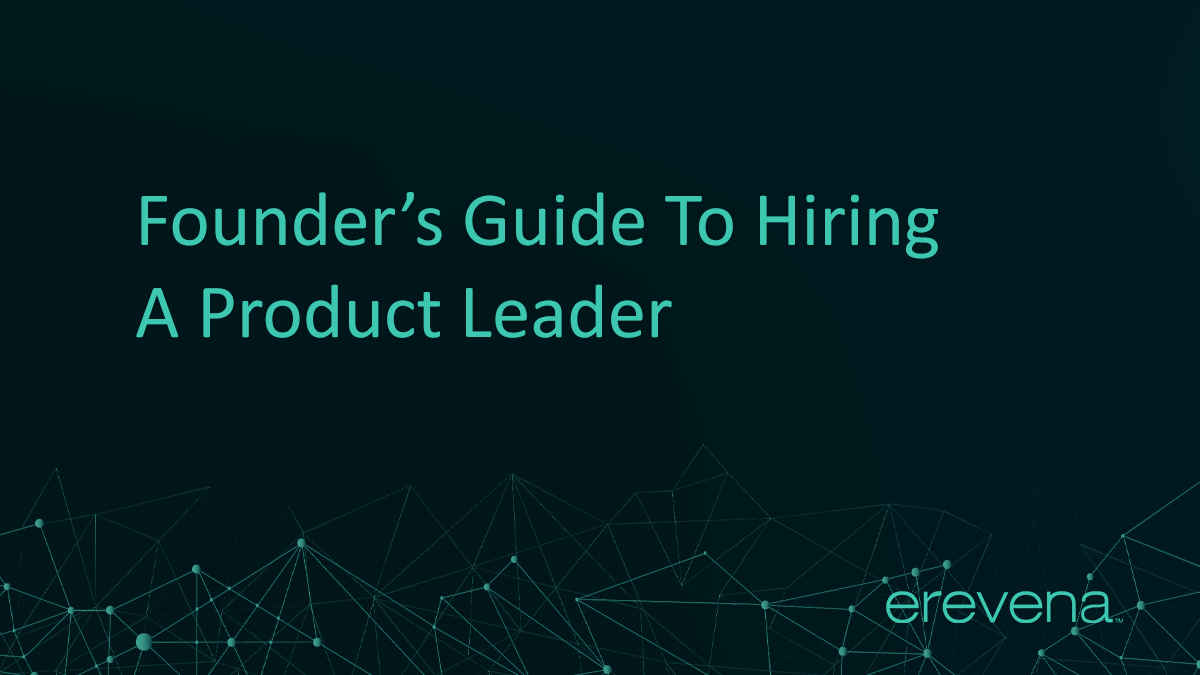Erevena recently co-hosted a breakfast event with Livingbridge to discuss how an IoT business can best demonstrate value to investors
We were joined by a dozen leaders in the IoT space on both the entrepreneur and investor side, and welcomed Pilgrim Beart, former CEO of AlertMe and current CEO of DevicePilot, as a keynote speaker.
Difficulties in demonstrating value
The problem of demonstrating value is one facing many IoT businesses. Although the investor market in the space is buoyant, with many IoT businesses outpacing their TMT counterparts with high sales multiples, investment strategy in this space can be ‘hit and miss’ due to the absence of hard-defined metrics. Where venture capitalists will look at a business’s potential, assessing technology, team and potential market size before making an investment, the private equity space takes a far more granular look at financial metrics and past performance as a predicator of future success. The difficulty in assessing IoT businesses is therefore that many of these businesses, even if profitable, do not have the recurring revenues of a SaaS business and are dependent on future hardware sales which are hard to forecast accurately.
The high sales multiples recently seen in the IoT space have therefore disguised some investor uncertainty around how to accurately value a business. This perception has been further exacerbated by some outsized valuations for IoT businesses recently acquired by tech giants: Google bought Looker for $2.6bn off estimated $140m revenues, and Salesforce’s acquisition of Tableau valued that business at $15.7bn off $1.15bn revenues. These acquisitions are clear indicators that big tech is willing to take risks in order to stay ahead of the competition when it comes to IoT, but what should an investor without the deep pockets or risk appetite of a Google or a Salesforce do? Until the market further matures investors may have to rely on a case by case examination of IoT prospects – but we discussed several ways businesses can look to demonstrate this value in the meantime.
Changing business model and being adaptable
Being willing to adapt is crucial in any early-stage business, but a willingness to pivot your business as you grow is perhaps even more important for IoT businesses. It’s a long-term market, and monetisation can take years longer than in other sectors, so you need to be able to be a bit ‘scrappy’ to help your business make enough money short-term to stay afloat. The market in this space has also rapidly evolved and diversified: a few years ago, there were a few key IoT players, but as the market matures a true ecosystem is beginning to develop with highly specific technology and a breadth of vendors covering different applications. Understanding where your value proposition fits within that ecosystem, and constantly adapting as that changes, is an important part of scaling and optimising within IoT.
One good example of this was given by Julian Hardy, the President and former CEO of Eseye, a global M2M managed connectivity business. Julian talked us through Eseye’s evolution: starting out as a single SIM product, they transitioned into hardware through acquisition, and ultimately successfully optimised their offering with the cloud and a partnership with AWS. At each pivot-point in this journey, there were tough decisions for Eseye to make and, in a very noisy and competitive industry, there was a strong temptation to give up. Instead, the business found new ways to adapt and to thrive in the new environment, and this adaptability was critical to their growth and success.
Having a simple vision investors can buy into
The importance of having a clear focus and vision was also discussed. Some at the table thought that a ten-year plan was essential for founders to plan towards; others felt this was too long and that a five- to eight-year plan, in line with most private equity investments, would be sufficient – but, either way, it was agreed that a unifying vision around delivering value was critical. Internally, a vision adds value by driving the right metrics and uniting different functions behind a common cause, but we focused on the external value this added. This was nicely described by Will Franks, CEO at Telensa, who took us through their journey of building their business.
Having been very successful in monetizing their initial vertical proposition of smart lighting for cities, Telensa looked at broadening their proposition – but hit a blocker when they considered expanding into new specific verticals. There were many varied opportunities to invest in expanding into these new verticals without any guarantee of delivering ROI. They decided instead to develop a simple horizontal model, using complex technology able to gather many data points around a city in order to build a consolidated ‘smart city’ offering which they could take to market. Through offering a simple, cheap solution which people can easily understand, Telensa have been able to build traction with cities and businesses globally. Throughout this growth and transition period, Telensa have kept focused on their three, five and ten-year horizon, which Will Franks suggested was essential to them ultimately being able to deliver that value. Through focusing on those company milestones, and what a ‘smart city’ will look like, at those different intervals, Telensa have avoided the trap of becoming too focused on their hardware product and trying to derive value from that alone.
Broadening into services
By far and away the clearest option for an IoT business trying to drive up value is to broaden their proposition with a services option. IoT depends on hardware, and hardware businesses tend to be capital intensive with a high cost of market entry so that even market leaders can take years to become profitable. As highlighted above, this can cause problems because profitability and its associated metrics are the principal tools used by investors to assess value. Broadening your offering into a complete hardware-and-services solution therefore makes sense, as it diversifies revenue streams and can provide a short-cut to profitability.
Marc Overton, Chief Solutions Officer at Sierra Wireless, discussed how they have gone about offering a more complete solution through their acquisition of Numerex in 2017. Numerex offered a portfolio of managed IoT solutions through integrated platforms, sold on a subscription basis, so the acquisition gave Sierra Wireless a valuable recurring revenue stream, and provided a complementary offering to Sierra’s IoT wireless solutions. The same tactic can be seen at ARM, which, although it will soon provide chips to almost every connected device, will struggle to make money from that alone because of the low cost of core IP. They therefore have been acquiring profitable services-led businesses (such as Treasure Data, acquired July 2018) to complement this core business and build out their ‘complete’ offering.
The difficulty with implementing services as part of an IoT business model is that it remains hard to persuade customers to pay for what they see as an ‘optional’ part of the product, and it takes a long time to change this mindset. Even with the Numerex acquisition, 75% of Sierra Wireless’s business hasn’t fully converted over to the services model, and it is a hard transition to make. Proving that the services element adds real value to the data is just one part of the battle.
The future of valuing IoT
There is no doubt that the IoT market, already buoyant, will continue to grow over the next few years. Interest in the connected devices space is driving amazing innovation and exciting solutions globally, and as the early IoT businesses start to reach a level of maturity, we will see much more M&A and investment. The questions of monetization and valuation will become more pertinent as the market develops and matures.
Hosted By
Kevin Elderfield, Partner at Erevena
Charlie Ross, Associate Director at Livingbridge
Share this article:













